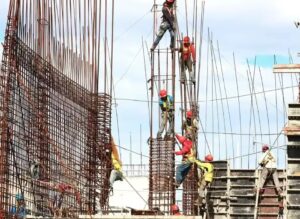Injury Law Has Several Catagories of Non-Economic Damages
When someone has an accident and sustains injuries, they can seek compensation for their losses by filing a personal injury case. These plaintiffs have the right to recover both economic and non-economic damages.
Economic damages refer to objective and easily quantifiable damages. Some examples of economic damages in the context of personal injuries include lost income, medical bills, and property damage.
On the other hand, non-economic damages are more subjective and more difficult to calculate. Nevertheless, non-economic damages are as significant as economic damages and are generally the more lucrative recovery in personal injury cases. Under Texas law, these types of damages include pain and suffering, loss of companionship, and loss of enjoyment of life.
This article will provide a detailed explanation of personal injury loss of enjoyment of life, including its definition and how to prove it.
Loss of Enjoyment of Life Definition
The “loss of enjoyment of life” (sometimes shortened to “loss of enjoyment”) is a legal term commonly defined as the inability of a person to pursue life’s general pleasures and enjoyments. These damages intend to place a monetary value on the victim’s deprivation from formerly enjoyed activities. Detrimental lifestyle changes can cover daily activities like socializing with friends and family to hobbies like playing sports or volunteering.
While every state recognizes the loss of enjoyment of life, how victims can receive compensation depends on a state’s classification. Some states provide a separate award of damages for a plaintiff’s loss of enjoyment. However, other states combine these damages into pain and suffering or general (non-economic) damages.
Texas and Louisiana classify the loss of enjoyment as a separate category that a plaintiff can recover in a personal injury suit. In these states, the loss of enjoyment of life is different than pain and suffering but directly results from injuries suffered in the accident. As a result, whether the plaintiff experiences a detrimental lifestyle change depends on both:
- The nature and severity of the plaintiff’s injuries
- The prior lifestyle of the plaintiff
Reasons to Sue for Loss of Enjoyment of Life
There are many reasons why an accident victim might seek to recover damages for loss of enjoyment. Some hypothetical examples include:
- A teenager sustains injuries in a car accident that prevent them from playing basketball and tennis, their favorite sports.
- A construction worker is injured during a workplace accident and can no longer work, relying on their friends and family for support. The inability to provide for himself and his dependents is a consequence of his injuries and has a negative impact on his quality of life.
- A young lawyer involved in a motorcycle accident no longer enjoys their life because of the enduring pain and suffering from the resulting injuries.
Ultimately, as long as a plaintiff can prove that their injuries resulted in a detrimental lifestyle, they may be able to recover compensation for loss of enjoyment.
Types of Injuries That Can Impact Enjoyment of Life
Many types of injuries can result in someone losing the enjoyment of life. Most of them are catastrophic injuries that have life-long impacts. These injuries can involve significant physical limitations or psychological suffering.
Brain Injuries
Brain injuries can range in severity, with traumatic brain injuries (TBIs) being the most severe. A TBI can occur from sudden blows to the head or objects penetrating the skull. Some common symptoms of a TBI include:
- Severe headaches
- Frequent nausea
- Seizures
- Convulsions
- Loss of balance
- Loss of cognitive function
Any of these symptoms can have a detrimental impact on a person’s enjoyment of life.
Spinal Cord Injuries
Most spinal cord injuries result in paralysis and loss of motor function. In severe cases, injury victims suffer major to complete paralysis from the neck down. Regardless of activity level prior to the accident, a spinal cord injury will result in an individual having a less pleasurable life.
Soft Tissue Injuries
These injuries are the consequence of damaged muscles, tendons, or ligaments. They are common accident injuries and can include:
- Strains (hamstring, calf, back, etc.)
- Sprains (ankle, wrist, etc.)
- Tendonitis
Although soft tissue injuries may seem relatively minor, they can have enormous long-term consequences. In particular, these kinds of injuries can devastate people who rely heavily on their range of motion, like professional athletes or manual laborers. A soft tissue injury that results in an inability to work or enjoy a hobby may be compensable for loss of enjoyment.
Chronic Pain-Inducing Injuries
Pain is a normal reaction and serves the necessary purpose of alerting the victim to their injury. Nevertheless, pain that lingers well after the healing process is complete does not provide any benefits. On the contrary, chronic pain can cause physical and emotional suffering for the victim.
From a physical standpoint, chronic pain leads to elevated cortisol levels that keep the body in a stressful state. The pain’s unyielding nature, as opposed to its severity, leads to a diminished quality of life. Some examples of the effects of chronic pain include:
- Sleep disruptions/insomnia
- Anxiety
- Depression
- Mood swings
- Disruptions to work and social lives
Loss of Hearing or Sight Injuries
Losing the ability to hear, see, or both can have catastrophic consequences. Deafness and blindness can impact an individual’s traveling, communication, and performance of their daily routine. This results in needing more accommodations while decreasing independence.
A loss of vision or hearing can impair a person’s ability to work and usually results in the inability to drive. Having to adjust to this new way of living often causes depression.
Disfigurement and Scarring
Accidents that involve scarring or disfigurement, especially to the face or other visible areas, can lead to a loss of enjoyment of life. Young victims have a higher likelihood of experiencing diminished enjoyment due to scars or disfigurement.
Not only is scar tissue generally considered unappealing, but it also impacts muscle mobility. For example, facial scarring increases the difficulty of smiling and making other expressions. These injuries can also result in lingering emotional damage.
Plastic surgery and prosthetics can sometimes correct accident deformities. Therapy can also help address the emotional issues stemming from these injuries. Nevertheless, they are not guaranteed solutions, and the victim is unlikely to have the same enjoyment of life as they did before the accident.
How to Prove Loss of Enjoyment of Life
Loss of enjoyment, like other types of non-economic damages, is difficult to prove due to its subjective nature. Nevertheless, there are several methods a plaintiff can use to support their claim for loss of enjoyment damages in a Texas or Louisiana court.
The most common way to prove loss of enjoyment is through testimony. Plaintiffs can use their testimony or those of their spouses, friends, or relatives. A good testimony will cover all of the activities enjoyed by the plaintiff before the accident and how the injuries sustained in the accident have hampered their ability to participate and enjoy those activities.
Another method of proving the loss of enjoyment of life is by submitting photographic evidence. Photos of the plaintiff engaging in activities they can no longer enjoy due to their injuries can provide compelling proof. These photos can also support a testimony, such as a plaintiff’s doctor attesting to the loss of faculties and how it has impacted the victim’s ability to perform the photographed activities.
Calculating Loss of Enjoyment Damages
Courts in Texas and Louisiana will award damages for loss of enjoyment in the amount necessary to compensate the victim for their injuries. Juries consider numerous factors when calculating damages, including the plaintiff’s:
- Age
- Health
- Life expectancy
- Responsibilities to others, if any
- Injury severity and duration
- Preferred activities before the accident
- Inability to participate in previously enjoyed activities
To get a better understanding of how these types of damages are awarded, here are a couple of hypothetical examples:
Case #1: A plaintiff is involved in a motorcycle accident that results in a broken wrist and fractured kneecap. Due to their injuries, they must refrain from playing soccer and basketball for one year. The jury awards the plaintiff $20,000 in loss of enjoyment damages.
Case #2: A plaintiff suffers severe burns from a car accident, resulting in four months of hospitalization and a homebound period of an additional eight months. For another year after being able to leave the house, the plaintiff engages in minimal activities. Although they fully recover, the anxiety stemming from their scarring and disfigurement results in a consistent avoidance of public activities. To compensate the victim for their considerably diminished life, the jury awards $500,000 in damages.
As these examples show, an award for loss of enjoyment damages can vary significantly depending on the complexity of the case.
How Morris & Dewett Can Help
Unfortunately, accidents involving injuries are common. In addition to considerable pain and suffering, many accident victims experience a less fulfilling life due to their injuries.
If you or a loved one is dealing with a personal injury loss of enjoyment of life, you deserve justice.
At Morris & Dewett, our dedicated personal injury lawyers are committed to helping injury victims protect their legal rights and recover their rightful compensation. We strive to deliver the most professional legal representation possible for our clients throughout Texas and Louisiana. Contact us today at (318) 221-1508 or fill out our online contact form.





